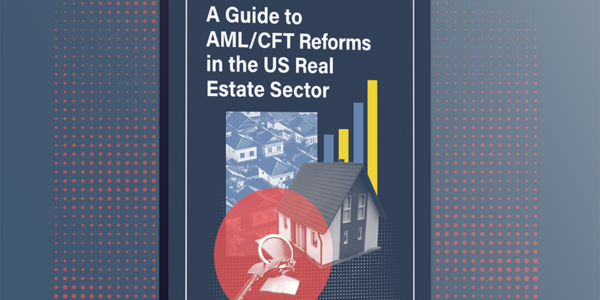
A Guide to AML/CFT Reforms in the US Real Estate Sector
Learn how real estate businesses can respond to US authorities' new measures for improved corporate transparency and financial crime risk management.
Download Your CopyReal estate fraud can take on a variety of forms, targeting different parts of the property buying or rental process. Title fraud is considered relatively rare compared to other property scams – such as mortgage fraud or business email compromise (BEC) scams. However, the repercussions can be devastating, and a recent surge of this crime type in the Greater Toronto Area – where at least 30 homes have been fraudulently sold since late 2021 – has led to greater regulatory scrutiny.
Title fraud is a type of real estate scam where a fraudster illegally transfers the ownership or title of a property to themselves or another party without the knowledge or consent of the legitimate property owners. In the majority of cases, title fraud involves vacant properties that are not the homeowner’s primary residence.
There are five steps typically involved in title fraud.
Fraudsters that attempt title fraud tend to target specific types of homeowners, including senior citizens, vulnerable homeowners, people who own a vacation home or rental property, individuals who have been a victim of identity theft, and those with paid-off properties. Once the target has been identified, the nature of the scam can take various forms:

Learn how real estate businesses can respond to US authorities' new measures for improved corporate transparency and financial crime risk management.
Download Your CopyIn March 2023, FinCEN published a Financial Trend Analysis that highlighted the following title fraud red flags for compliance staff to be aware of:
While no single red flag indicator determines illicit or suspicious activity, FinCEN reminds firms to consider each transaction’s relevant facts and circumstances in line with a risk-based approach to compliance.
Title fraud prevention measures used by businesses may include:
According to sector-specific guidance published by the Financial Action Task Force (FATF), a risk-based approach (RBA) should be used as the foundation for an anti-money laundering and combatting the financing of terrorism (AML/CTF) program. This will help firms prevent, mitigate, and proportionally manage risks, allowing resources to be utilized more effectively and improving outcomes.
In the battle against title fraud and other real estate scams, utilizing the right tools can help firms better prevent fraudulent activity. The FATF has identified artificial intelligence (AI) and machine learning (ML) as technologies that can assist firms in detecting abnormalities, prioritizing alerts to make remediation more efficient, and intuitively setting fraud transaction monitoring thresholds. Additionally, automated fraud detection solutions can help firms mitigate risk by ensuring all transactions adhere to legal and regulatory requirements. This includes checking for compliance with AML and KYC regulations.
Request a demo to see how our fraud detection capabilities can help you see the unseen.
Get Started NowOriginally published 24 October 2023, updated 13 May 2024
Disclaimer: This is for general information only. The information presented does not constitute legal advice. ComplyAdvantage accepts no responsibility for any information contained herein and disclaims and excludes any liability in respect of the contents or for action taken based on this information.
Copyright © 2025 IVXS UK Limited (trading as ComplyAdvantage).